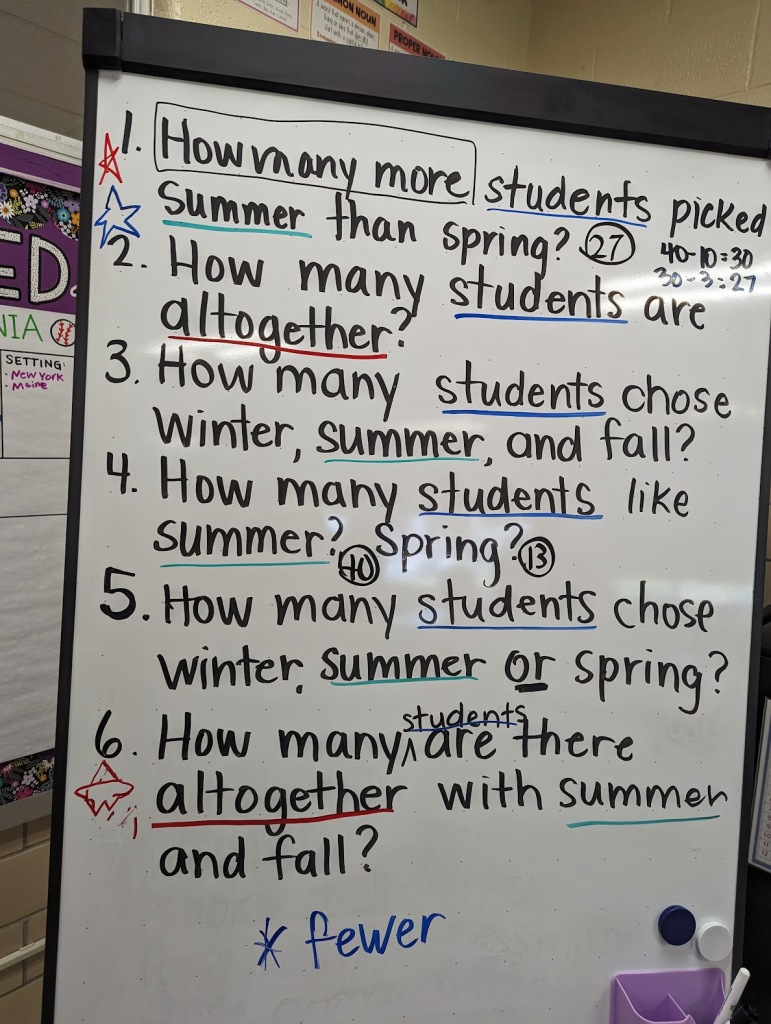In mathematics education, problem posing refers to several related types of activities that entail or support teachers and students formulating and expressing a problem based on a particular context, such as a mathematical expression, diagram, table, or real-world situation (Cai & Hwang, 2020).
Because problem posing is so dynamic, multi-faceted, and varied between classrooms, I understand why it is hard to write into published curriculum materials. However, understanding and trying out the structure of problem posing makes it a really impactful teacher tool for adapting curriculum materials.
Why adapt ?
Curriculum activities typically require students to jump right into solution mode which explains why many students pluck numbers from word problems and operate without first making sense of the context. However, when students have the opportunity to pose their own mathematical problems based on a situation, they must make sense of the constraints and parameters that can be mathematized. They then extend from that sense-making activity to build connections between their existing understanding and the new context and its related mathematical ideas.1 This provides opportunity for increased student agency and sense making in any lesson.
How to adapt?
Last week, the third grade teachers and I planned for a lesson that involved students answering questions about data in a scaled bar graph from the prior lesson. Here is the data and graph they were working from.


Instead of asking students to jump right into answering the questions in their workbook, we removed that day’s warm-up to make time for problem posing and adapted the activities that followed.
First, we displayed the graph and asked students “What math questions can we ask about this group of students?” Below are 2 different class examples.

Having such a rich bank of questions, we could have asked students to jump into solving them, however we decided to spend some time focusing on the structure of their questions. We asked them to discuss, “Which questions are similar and why?.” The discussion ranged from similarities based on the operation they would use to solve, whether they could just look at the graph and answer the question without any operation, and the wording problems had in common or not. Such great schema for solving future word problems!
Now that students had made sense of the context and problems, we asked them to solve as many problems as they could. As they solved, we asked them to think about which problems they solved the same way and which ones they solved differently. As we wrapped up the lesson, we shared student solutions and focused on their solution strategies leading to an amazing connection about using addition or subtraction to solve the ‘how many more or less’ problems.
What was the original activity?
If we had followed the curriculum, these are the questions students would have solved. As you can see the students came up with similar, if not the same, questions and SO much more!
- How many students are represented in the graph?
- How many students chose spring or fall as their favorite season?
- How many more students chose summer than winter?
- How many fewer students chose spring than fall?
While having solid curriculum materials is extremely important, they can be made so much better by adapting lessons in ways that provide the space for students to make sense of problems and have ownership in the problems they are being asked to solve. I am so grateful for the teachers, admin, and Jinfa’s partnership in this work and look forward to sharing our work and learnings at NCSM DC!








